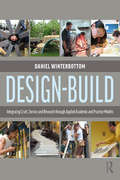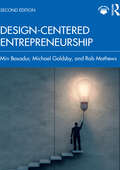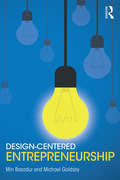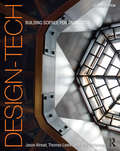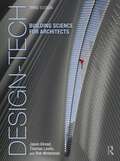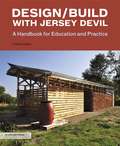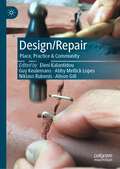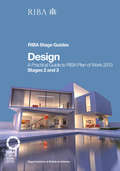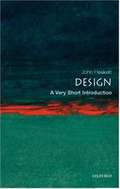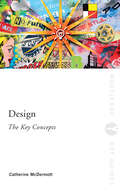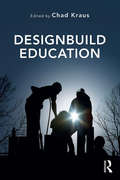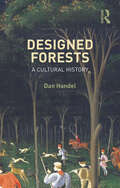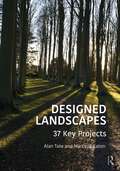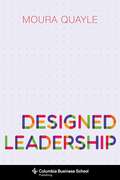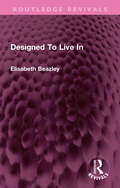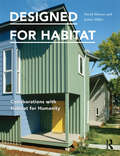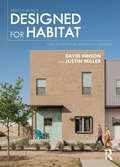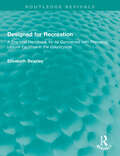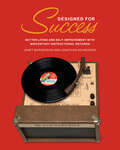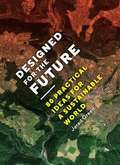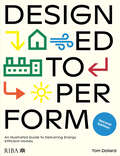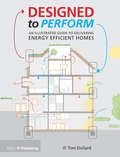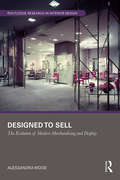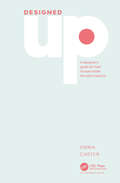- Table View
- List View
Design-Build: Integrating Craft, Service, and Research through Applied Academic and Practice Models
by Daniel WinterbottomDesign-Build provides everything you need to know about how to embark on a design-build project within a studio or professional practice setting. Design-build models have increased across academic programs worldwide, allowing students to address the real-world challenges of working in the community using a participatory design process. In practice, they offer a full partnership between the designer and builder to elevate design concepts and reduce project costs. Written by an experienced practitioner and educator, this book offers contextual background on the development of the design-build model in pedagogy and practice, guidance from inception to conclusion for classroom and field usage, discussions on the shift to community-engaged design and inspirational examples from international case studies. Illustrated in full color throughout, it looks at structuring a design-build firm, best-practice, efficiency and the limitations of design-build as a practice model. This is the fundamental guidebook for those interested in developing or working for a design-build professional practice, academics leading design-build programs and students interested in social and environmental justice, education, and practice through a design-build model.
Design-Centered Entrepreneurship
by Rob Mathews Min Basadur Michael GoldsbyGrounded in extensive research and field testing, Design-Centered Entrepreneurship presents a concise problem-solving approach to developing a unique business concept. Step-by-step guidelines provide insight into exploring market problem spaces, uncovering overlooked opportunities, reframing customer problems, creating business solutions, and sustaining success and an entrepreneurial culture. Drawing on methodologies from the world of design, the book helps students of entrepreneurship fill in the missing piece that transforms opportunity recognition into a viable business concept. Plenty of useful diagrams help to organize key concepts, making them easily accessible to readers. This second edition has been updated to include social entrepreneurship, more international examples and enhanced support materials. The digital supplements include a virtual creative problem-solving profile, slides, and an instructor manual. Design-Centered Entrepreneurship is the ideal text for entrepreneurship and new venture creation courses with a focus on design thinking.
Design-Centered Entrepreneurship
by Min Basadur Michael GoldsbySupported by extensive research and field-testing, Design-Centered Entrepreneurship presents a concise, problem-solving approach to developing a unique business concept. Step-by-step guidelines provide insight into exploring market problem spaces, uncovering overlooked opportunities, reframing customer problems, and creating business solutions. Basadur and Goldsby present students with a creative and practical approach to problem finding, perception, organizational culture, and ethics in the entrepreneurial field. Plenty of useful diagrams help to organize key concepts, making them easily accessible to readers. Drawing on methodologies from the design field, the book will help students of entrepreneurship fill in the missing piece that transforms opportunity recognition into a viable business concept. Additional support for students and instructors, including a virtual Creative Problem Solving Profile, can be found at www.basadurprofile.com/.
Design-It-Yourself Clothes: Patternmaking Simplified
by Cal PatchIf you've ever watched Project Runway and wished you were a contestant, or you're simply ready to take your sewing to a new level, Design-It-Yourself Clothes teaches you the fundamentals of modern patternmaking so that you, too, can create your own inspired clothing. Until now, the aspiring DIY fashionista has been hard-pressed to find self-teaching tools other than dry textbooks or books with outdated looks. Finally, in Design-It-Yourself Clothes, former Urban Outfitters designer Cal Patch brings her youthful aesthetic to a how-to book. If you want to wear something you can't find on store racks and make clothes that express your individual style, or if you've reached a sewing plateau and want to add pattern drafting to your repertoire, Design-It-Yourself Clothes is the book you have been waiting for.In five key projects (each with four variations)-a perfect-fitting dress, T-shirt, button-down shirt, A-line skirt, and pants-Patch shares the art of patternmaking. At its core, it's much simpler than you think. Patch covers everything an intermediate sewer needs to know in order to become a fabulous fashion designer, from designing the patterns, taking your own measurements, and choosing fabrics to actually sewing the clothing. You will also learn how to stylize patterns by using darts, waistbands, patch pockets, and ruffles. Patch offers tips, explanations, options, and exercises throughout that will make the design process that much easier. But besides showing you how to create clothing from scratch, she also teaches you how to rub off patterns from existing clothing-so if you have a pair of pants that you love but are worn out, or you have your eye on a piece in the store with a prohibitive price tag, you can figure out how to get the looks you want by using your own two hands.
Design-Tech: Building Science for Architects
by Thomas Leslie Jason Alread Robert WhiteheadDesign-Tech is an indispensable, holistic approach to architectural technology that shows you in hundreds of drawings and tables the why as well as the how of building science, providing you with a comprehensive overview. In this expanded edition, measurements and examples are listed in both metric and imperial units to reflect the global reality of architectural practice. The authors also address digital fabrication, construction documentation, ultra-high-rise structures, and zoning codes. And there's more in-depth coverage of structural design and greater emphasis on environmental forces. Numerous case studies demonstrate real-world design implications for each topic, so that you can integrate technical material with design sensibilities. Short chapters explain each topic from first principles in easy-to-reference formats, focusing on what you need to know both at the drawing board and in future discussions with engineers, contractors, and consultants. This new edition incorporates material from continuing curricular experimentation in the SCI-TECH sequence at Iowa State University, which has been recognized with awards and funding from the American Institute of Architects, the U.S. Green Building Council, and the National Council of Architectural Registration Boards.
Design-Tech: Building Science for Architects
by Jason Alread Thomas Leslie Rob WhiteheadThe third edition of Design-Tech provides an indispensable, holistic resource for integrating building technologies into critically designed, performance-based architectural projects. The book’s format follows the developmental stages of a typical architectural project; it provides a step-by-step process for addressing and integrating building sciences from first principles of human comfort, materials, structures, and environmental systems to advanced construction systems and measures of building performance. Short chapters incorporate easy-to-understand information with hundreds of useful illustrations, tables, and references that explain the why as well as the how of building science. The content focuses on what designers need to know in the studio to create sustainably designed, integrated buildings, and it prepares them for future discussions with engineers, contractors, and consultants.The updated format builds a coherent framework for integrated project design studio development, necessary for all contemporary accredited schools of architecture. Chapters build upon critical project information from schematics toward technical integration. New chapters emphasize performance-based design strategies including sustainable design values, critical schematic planning, enhanced building envelope design strategies, and advanced performance systems. Enhanced visualization of schematic design strategies helps explain sustainable design standards, code compliance, and structural schematics, and throughout, the third edition focuses on contemporary issues such as embodied carbon, heavy timber construction, life cycle costs, and long-term performance.This will be a must-read for all architecture students looking for an accessible guide to building science.
Design/Build with Jersey Devil: A Handbook for Education and Practice
by Charlie HaileySteve Badanes, Jim Adamson, and John Ringel believe an architect's job does not stop at designing a building, but that it extends to constructing it as well. Now working into their fifth decade, Jersey Devil, the loose-knit group they founded in 1972, bands together under this design/build ethos that an architect's place is just as much on the job site as it is at the drawing board. The trio pioneered design/build practice and their influence has spawned more than one hundred design/build programs.Jersey Devil's process and expertise are unpacked in this Architecture Brief, providing students and teachers with a toolkit for design/build education. Through stories, didactic commentary, and sample exercises, the Design/Build complements nuts-and-bolts content with Jersey Devil's philosophy and perspective, allowing the book to impart practical instruction while acting as a valuable guide for navigating the elusive challenges of design/build. Themes touch on socially responsible architecture, intuition and intentionality, detailing and fostering craftsmanship, group work and collaboration, off-the-shelf components and nonstandard applications, educational reform, ethos and risk, good life and play, the politics of building, and university-community relations.
Design/Repair: Place, Practice & Community
by Alison Gill Eleni Kalantidou Guy Keulemans Abby Mellick Lopes Niklavs RubenisThis collection of essays sheds light on repair as a disposition to material culture and a practice rooted in diverse sociocultural experiences. It provides an in-depth exploration of how repair manifests itself through the different lenses of governance, grassroots activism, transformative design and community-led initiatives. Most importantly, the chapters demonstrate how place-based approaches can reveal blueprints for social impact in circumstances of growing environmental and social precariousness.
Design: A Practical Guide to RIBA Plan of Work 2013 Stages 2 and 3 (RIBA Stage Guide)
by Tim BaileyThis is the second in a must-have series of step-by-step guides to using the new RIBA Plan of Work 2013 on your project. Drawing together stages 2 and 3 this book explains the importance of the Concept Design and Developed Design, how to achieve a balance of creativity and method and how it should interact with the briefing and construction phases. Providing a practical tool to running an efficient project each guide follows the same format leading you through the core tasks at each stage supported by tips, definitions, templates and useful techniques. Five theoretical scenarios are used throughout the guides to illustrate how the Plan of Work can be applied on various project types and sizes including an extension to a house, a new library and a large office building.These guides will provide unrivalled support for practices on all projects – large and small – and across all types of procurement.
Design: A Very Short Introduction
by John HeskettJohn Heskett wants to transform the way we think about design by showing how integral it is to our daily lives, from the spoon we use to eat our breakfast cereal, and the car we drive to work in, to the medical equipment used to save lives. Design combines 'need' and 'desire' in the form of a practical object that can also reflect the user's identity and aspirations through its form and decoration. This concise guide to contemporary design goes beyond style and taste to look at how different cultures and individuals personalize objects. Heskett also reveals how simple objects, such as a toothpick, can have their design modified to suit the specific cultural behaviour in different countries. There are also fascinating insights into how major companies such as Nokia, Ford, and Sony approach design. Finally, the author gives us an exciting vision of what design can offer us in the future, showing in particular how it can humanize new technology.
Design: The Key Concepts (Routledge Key Guides)
by Catherine McDermottThis is the essential student’s guide to Design – its practice, its theory and its history. Drawing from a wide range of international examples, respected design writer Catherine McDermott explores key topics including: international design – from Europe to Africa design history – from Art Nouveau to punk sustainable design, recycling and green design design theory – from semiotics to gender, to postcolonialism design technology, graphic design and the web. Fully cross-referenced, with up-to-date guides for further reading, Design: The Key Concepts is an indispensable reference for students of design, design history, fashion, art and visual culture.
Designbuild Education
by Chad KrausDesignbuild Education adopts the intellectual framework of American Pragmatism, which is a theory of action, to investigate architects’ compelling urge to build and how that manifests in collegiate designbuild programs. Organized into four themes—people, poetics, process, and practice—the book brings together new essays by some of today’s most well-known designbuild educators, including Andrew Freear from Rural Studio and Dan Rockhill from Studio 804, to shed light on the theoretical dimensions of their practice and work. Illustrated with over 100 black and white images.
Designed Forests: A Cultural History
by Dan HandelDesigned Forests: A Cultural History explores the unique kinship that exists between forests and spatial design; the forest’s influence on architectural culture and practice; and the potentials and pitfalls of “forest thinking” for more sustainable and ethical ways of doing architecture today. It tackles these subjects by focusing on architecture’s own dispositions, which stem from an ecology of metaphor that surrounds its encounters with the forest and undergird ideas about Nature and natural systems. The book weaves together global narratives and chapters explore a range of topics, such as the invention of forest plans in colonial India, the war waged on the jungles of Vietnam, economic land use concepts in rural Germany, precolonial ecological pasts in Manhattan, and technologically saturated forests in California. This book is essential for landscape architects, urbanists, architects, forestry experts, and everyone concerned with larger environmental contexts and the ever-evolving relationship between nature and culture.
Designed Landscapes: 37 Key Projects
by Alan Tate Marcella EatonDesigned Landscapes is a case-by-case study of 37 significant, existing works of landscape design worldwide, largely constructed since the Renaissance. Being an informative and easy-to-read reference volume for practitioners and students alike, it presents key precedents in landscape architecture using site plans and recent photographs to showcase each project. Organised and presented in 12 sections based on project type, each project is examined based on date, previous site condition, designer(s), design intentions, current composition, unique features, ownership and management, and comparable projects. Each chapter offers an insightful critique of the featured projects. Written by the authors of Great City Parks, the book posits that these carefully selected key projects have maintained their status throughout the ages because they express values and design intentions that continue to inform the practice of the landscape architecture in the present day. The book concludes with a ten-point summary of lessons for professional practice gleaned from the studies. Including a wide range of case studies from countries including many in western Europe, the United States, Canada, India, Japan and China, and lavishly illustrated with over 200 full-colour images, the book is a must-have volume for anyone interested in the history and current practice of landscape architecture.
Designed Leadership (Columbia Business School Publishing Ser.)
by Moura QuayleGreat leaders aspire to manage “by design”—with a sense of purpose and foresight. But too few leaders incorporate the proven practices and principles of the design disciplines. Lessons learned from the world of design, when applied to management, can turn leaders into collaborative, creative, deliberate, and accountable visionaries. Design thinking loosens the mind and activates innovation. It creates the conditions for employees to thrive and for all kinds of businesses to succeed. In Designed Leadership, the strategic-design scholar and urban-systems designer Moura Quayle shares her plan for integrating design and leadership, translating processes, principles, and practices from years of experience into tools of change for professional leaders. Quayle describes the key concepts of designed leadership, such as “make values explicit” and “learn from natural systems,” showing how strategic design can spur individual creativity and harness collective energy. For managers at any level, Designed Leadership uses original visuals and field-tested examples to teach the kind of thinking, theorizing, and practicing that result in long-lasting high performance in the workplace and beyond.
Designed To Live In (Routledge Revivals)
by Elisabeth BeazleyOriginally published in 1962, this book traces the main influences behind modern design in domestic architecture. It does so against the context of the effect each new dwelling has on its environment and the effect its design has on those in the surrounding (and often older, historic) housing stock. Diverse influences such as the bye-law street and Le Corbusier’s Ville Radieuse are discussed, while the ideas bearing on the individual private house range from those of the early nineteenth century villa builders to Frank Lloyd Wright’s prairie houses and the work of Mies van der Rohe. The book closes with a detailed discussion of the problems and possibilities of domestic design in house-building in the late 20th Century
Designed for Habitat: Collaborations with Habitat for Humanity
by Justin Miller David HinsonIf you're looking for ways to give back to your community, then this book, the first to profile thirteen projects designed and built by architects and Habitat for Humanity, will help. Detailed plans, sections, and photographs show you how these projects came about, the strategies used by each team to approach the design and construction process, and the obstacles they overcame to realize a successful outcome. The lessons and insights, presented here will aid you, whether you're an architect, architecture student, Habitat affiliate leader, or an affordable housing advocate. Located all across the United States, these projects represent the full spectrum of Habitat for Humanity affiliates, from large urban affiliates to small rural programs. These cases illustrate a broad range of innovative approaches to energy performance, alternative construction strategies, and responses to site context. And each house demonstrates that design quality need not fall victim to the rigorous imperatives of cost, delivery, and financing.
Designed for Habitat: New Directions for Habitat for Humanity
by Justin Miller David HinsonDesigned for Habitat: New Directions for Habitat for Humanity presents 12 new projects designed and built via collaborations between architects and Habitat for Humanity®. The ways in which we think about affordable housing are being challenged by designers and not-for-profit housing advocates such as Habitat for Humanity and its affiliates. The projects chronicled in this book consider home affordability through the lens of monthly homeownership expenses, energy efficiency and residential energy use, and issues of designed resilience to natural events ranging from aging and accessibility concerns to natural disasters and climate change. New to this edition, the projects reflect new approaches to building scale, construction technology, energy and affordability, and design and context. Illustrated with over 100 color images, the case studies include detailed plans and photographs to show how these projects came about, the strategies used by each team to approach the design and construction process, and the obstacles they overcame to realize a successful outcome. The lessons and insights presented will be a valuable resource, whether you’re an architect, an architecture student, a Habitat affiliate leader, or an affordable housing advocate.
Designed for Recreation: A Practical Handbook for All Concerned with Providing Leisure Facilities in the Countryside (Routledge Revivals)
by Elisabeth BeazleyOriginally published in 1969, at a time when there was an ever-increasing number of people going to the coast and countryside at weekends and on holiday, this book filled a gap by providing detail on the physical results of all that needed to be done for the leisure-seeking public. It discusses juggling the needs of the public whilst maintaining the quality of the natural environment – a balancing act which remains as relevant in the 21st Century as when the book was first published. The book is intended for all those making provision for public recreation and countryside protection. The passing of the Countryside Act in 1968 in the UK necessitated detailed work for local authorities: the design and siting of car parks; public lavatories; litter bins, camp and picnic sites; swimming pools and information centres to name but a few. Elisabeth Beazley discusses the principles involved and illustrates successful and cautionary examples from both sides of the Atlantic as well as Continental Europe
Designed for Success: Better Living and Self-Improvement with Midcentury Instructional Records
by Janet Borgerson Jonathan SchroederA charmingly illustrated history of midcentury instructional records and their untold contribution to the American narrative of self-improvement, aspiration, and success.For the midcentury Americans who wished to better their golf game through hypnosis, teach their parakeet to talk, or achieve sexual harmony in their marriage, the answers lay no further than the record player. In Designed for Success, Janet Borgerson and Jonathan Schroeder shed light on these endearingly earnest albums that contributed to a powerful American vision of personal success. Rescued from charity shops, record store cast-off bins, or forgotten boxes in attics and basements, these educational records reveal the American consumers&’ rich but sometimes surprising relationship to advertising, self-help, identity construction, and even aspects of transcendentalist thought.Relegated to obscurity and novelty, instructional records such as Secrets of Successful Varmint Calling, You Be a Disc Jockey, and How to Ski (A Living-Room Guide for Beginners) offer distinct insights into midcentury media production and consumption. Tracing the history of instructional records from the inception of the recording industry to the height of their popularity, Borgerson and Schroeder offer close readings of the abundant topics covered by &“designed for success&” records. Complemented by over a hundred full-color illustrations, Designed for Success is a wonderfully nostalgic tour that showcases the essential role these vinyl records played as an unappreciated precursor to contemporary do-it-yourself culture and modern conceptions of self-improvement.
Designed for the Future
by Jared GreenIn Designed for the Future, author Jared Green asks eighty of today's most innovative architects, urban planners, landscape architects, journalists, artists, and environmental leaders the same question: what gives you the hope that a sustainable future is possible? Their imaginative answers--covering everything from the cooling strategies employed at Cambodia's ancient temple city of Angkor Wat to the use of cutting-edge eco-friendly mushroom board as a replacement for Styrofoam--show the way to our future success on earth and begin a much-needed dialogue about what we can realistically accomplish in the decades ahead. Featuring an international roster of leading design thinkers including:* Biomimicry pioneer Janine Benyus* Curator Barry Bergdoll* Educator and author Alan Berger* Environmentalist and author Lester Brown* Architect Rick Cook* Urban Planner Paul Farmer* Critic Christopher Hume* Architect Bjarke Ingels* Landscape designer Mia Lehrer* Architect Rob Rogers* Critic Inga Saffron* Artist Janet Echelman
Designed to Perform: An Illustrated Guide to Delivering Energy Efficient Homes
by Tom DollardHow do we ensure sustainable buildings perform as intended? The performance gap between predicted and actual energy use in new homes has been identified as key problem by government and industry experts. This updated edition is an illustrated practical design guide to delivering better energy performance in all types of new build homes. It introduces readers to the concept of the performance gap and highlights clear issues and solutions to help architects improve their detailing at design stage. The book: Features annotated details with photos taken from live construction sites Includes accessible practical guidance for busy practitioners Raises construction quality and performance of new homes Promotes the case for more architect supervision throughout the construction process A new chapter features innovative low carbon building methods, including hempcrete blocks, clay blocks and straw bale. All information has been updated to reflect the latest data with fresh details and technologies.
Designed to Perform: An Illustrated Guide to Providing Energy Efficient Homes
by Tom DollardThis book is an illustrated practical design guide to delivering better energy performance in all types of new build homes. It takes the form of an annotated details book, with photos taken from live construction sites, with the content based around diagrams, drawings and photos by the author, which demonstrates valuable best practice knowledge and advice. Chapter 1 is an introduction to the performance gap and the quality of design and construction in new build homes, explaining the typical construction sequence of homebuilding, and highlights common issues that designers need to engage with. Chapters 2-7 look at each construction fabric in turn, including a series of detailed drawings, diagrams and photos illustrating the key elements of good design. Chapter 8 contains a checklist of all performance gap issues that designers need to look for. This book will provide valuable guidance to architects and designers on how to improve their detailing at construction stage, and therefore the overall quality of design and performance of new homes.
Designed to Sell: The Evolution of Modern Merchandising and Display (Routledge Research in Interior Design)
by Alessandra WoodDesigned to Sell presents an engaging account of mid-twentieth-century department store design and display in America from the 1930s to the 1960s. It traces the development of postwar philosophies of retail design that embodied aesthetics and function and new modes of merchandise display, resulting in the emergence of a new type of industrial designer. The evolution of aesthetics in department stores during this period reflected larger cultural shifts in consumer behaviour and lifestyle. Designed to Sell explores these changes using five key case studies and original archival sources to reveal the link between designers and consumption beyond the design of individual objects. It argues that design is not simply connected to retail consumption, but that it is capable of controlling how and where customers shop and what they are drawn to purchase. This book contextualises this discussion and brings it up to date for students and scholars interested in design, retail, and interior history.
DesignedUp: A designer’s guide on how to lead inside the tech industry
by Emma Carter"Carter’s new book, DesignedUp, is a useful guide for the modern design practitioner who sits at the intersection of the IT consultancy and agency world — someone who chooses to plot their own course across many companies’ diverse set of interests instead of being loyal to just one. In doing so, they have selected an exciting path that will bring them many heralded victories and challenging pitfalls, which Carter has aptly navigated over her impressive career. If you have been in the field for a while, I think you will find Carter’s book to be a refreshing antidote to any career doldrums you may have."— Dr. John Maeda, VP of Design and Artificial Intelligence, Microsoft "Designers have long asked for a ‘seat at the table.’ What Emma Carter has done is given them the roadmap to not only get that seat, but to redesign the table to fit what tech-driven organisations need to succeed today."— Jeff Gotthelf, Author "Lean UX" and "Sense & Respond" Are you struggling to get non-designers to understand the value of what you do? Tech companies and consultancies can feel like an inhospitable landscape for designers. Too often, design is seen as a ‘nice extra’, rather than an integral part of the process, and designers find their voice overshadowed by decision-makers who don’t understand or appreciate the power of design. DesignedUp will help you eliminate obstacles and become a design leader who can effectively influence everyone from engineers to C-level execs. By sharing perspectives, methods, frameworks and hero stories from global Tech & Design leaders, including Rebecca Parsons, CTO at Thoughtworks; Andreas Markdalen, Global Chief Creative Officer at frog; Lauren Pleydell-Pearce, Executive Creative Director at PwC UK, Dr. Andy Polaine, Ex-global Group Design Director at Fjord, the book shows you how to: Assess and harness your strengths Understand and communicate in the language of business and tech Develop your influencing skills to bring tech leads and stakeholders on board with design Present compelling design arguments that resonate with decision-makers Turn execs into design evangelists Spread the love for human-centred design far beyond your deliver
